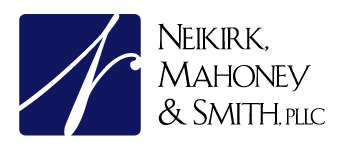
As the Electoral College map turned red on Tuesday, many Americans saw red, too, and apparently had thoughts about moving to Canada. In fact, the official English version of the Canadian Citizenship and Immigration website went down more than once on Tuesday night through early Wednesday morning (it’s true, I checked it out), reportedly due to heavy traffic.
Because of its size and relatively low population, Canada has long embraced those from outside of its borders. On Tuesday, Canada reminded the world of its stance on immigration by tweeting out a reminder that it welcomes people of all cultures, perhaps a little nod to those threatening to leave the United States if the election results weren’t in their favor.
First things first: if you’re a U.S. citizen or tax resident, moving across the border won’t change your U.S. filing requirements all that much. Fleeing the country isn’t the silver bullet that you might expect to avoid reporting and paying taxes. So long as you’re a U.S. citizen or tax resident, you’re still required to file your federal income tax return with the Internal Revenue Service (IRS) every year and report your worldwide income. Yes, worldwide. We have a global tax system which means that you file and pay taxes on income earned all over the world – though certain credits, exclusions, and deductions may apply.
One factor that can change your tax picture is the existence of a tax treaty. The U.S. has nearly 70 tax treaties with countries all around the world, and as you’d expect, one of those is with Canada. It gets eyeballed so much that the IRS has a publication, Pub 597, Information on the United States – Canada Income Tax Treaty, explaining the highlights. The general idea of the treaty is to provide beneficial treatment for certain income items so that all income isn’t taxed in both countries. Here are a few highlights:
Dividends. For Canadian source dividends received by U.S. residents, the Canadian income tax generally may not be more than 15%.
Interest. Canadian source interest received by U.S. residents is typically exempt from Canadian income tax.
Gains from the sale of property. Generally, gains from the sale of personal property by a U.S. resident having no permanent establishment in Canada are exempt from Canadian income tax.
Royalties. Copyright royalties and other like payments for the production or reproduction of any literary, dramatic, musical, or artistic work (other than payments for motion pictures and works on film, videotape, or other means of reproduction for use in connection with television, which may be taxed at 10%) are typically exempt from Canadian tax.
Personal Services. A U.S. citizen or resident who is temporarily present in Canada during the tax year is exempt from Canadian income taxes on pay for services performed, or remittances received from the United States if the citizen or resident qualifies under one of the treaty provisions. (If you become a resident, all bets are off.)
Self-Employment Income. Income from services performed (other than those performed as an employee) is taxed in Canada if attributable to a permanent establishment in Canada.
Pensions and Annuities. Pensions and annuities from Canadian sources paid to U.S. residents are subject to tax by Canada, but the tax is limited to 15% of the gross amount (if a periodic pension payment) or of the taxable amount (if an annuity). Canadian pensions and annuities paid to U.S. residents may be taxed by the United States, but the amount of any pension included in income for U.S. tax purposes may not be more than the amount that would be included in income in Canada if the recipient were a Canadian resident. Pensions do not include Social Security benefits.
Charitable Contributions. You may deduct contributions to certain qualified Canadian charitable organizations on your U.S. income tax return.
Courtesy of
Forbes
For more information contact
Neikirk, Mahoney and Smith at 502-896-2999




















